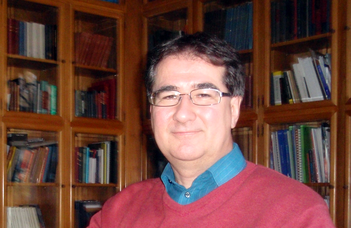Ábrahám Péter (CSFK Konkoly Thege Miklós Csillagászati Intézet):

2022. március 10. 15:00 - 16:00
2022. március 10. 15:00 - 16:00
The James Webb Space Telescope and the birth of Sun-like stars
Az előadás kivonata: On Dec 25, 2021 an Ariane 5 launcher lifted to orbit the largest ever and most complex astronomical instrument, the James Webb Space Telescope (JWST). Built in collaboration between NASA, ESA, and the Canadian Space Agency, JWST will be an infrared observatory, targeting a different wavelength domain than the mainly optical-ultraviolet Hubble Space Telescope. Why is the infrared domain so interesting, what is the discovery space there? In this talk I will give a short introduction to infrared astronomy, describe the main capabilities of the Webb telescope, and summarize what we expect to discover in my own research field, the formation of Sun-like stars and their planetary systems. So far all the difficult technical steps to deploy and initialize the telescope were performed successfully, and the observations are expected to start this summer. One of the accepted proposals was submitted by our research group at the Konkoly Observatory (ELKH CSFK). The new JWST data will help us to learn about what materials form comets in a newborn planetary system, and how they collect those shiny silicate crystals that are often seen in solar system comets.
Az előadóról:
Péter Ábrahám is a research advisor at the Konkoly Thege Miklós Astronomical Institue of the Research Centre for Astronomy and Earth Sciences (CSFK). He graduated at the Eötvös University as physicist and astronomer in 1987, and obtained there his PhD degree in 1996. Between 1995 and 2001 he worked at the Max-Planck-Institut für Astronomie in Heidelberg, Germany on calibration and science projects of the Infrared Space Observatory. After returning to Hungary he founded an infrared astronomy group at the Astronomical Observatory. Between 2010 and 2015 he was the director of the observatory, then in 2012-15 also the director general of the newly founded Research Centre for Astronomy and Earth Sciences. Today he is working on different aspects of the formation of Sun-like stars, using both space-borne instrumentation and the telescopes of the European Southern Observatory in Chile. He is the leader of a research group applying interferometric techniques in star formation studies, and the PI of an accepted JWST proposal.
- Publikációk: ui.adsabs.harvard.edu

